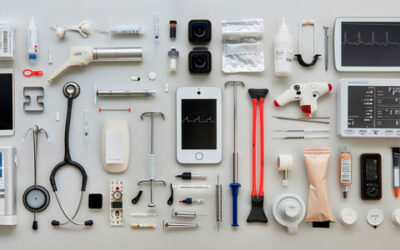[dsm_gradient_text gradient_text="Agile Requirements Engineering in the Automotive Industry: Challenges and Solutions at Scale" _builder_version="4.27.0" _module_preset="default" header_font="Questrial|||on|||||" header_text_align="center" header_letter_spacing="5px"...
Medical Device DFSS Deployment: A Roadmap to Excellence
Design for Six Sigma (DFSS) is a powerful methodology that integrates quality into the design phase of medical device manufacturing, ensuring safety, reliability, and customer satisfaction. This guide explores the essential phases, roles, and best practices for successful DFSS deployment, helping companies meet regulatory demands and enhance product quality.

In today’s highly regulated and competitive healthcare environment, medical device companies are under constant pressure to improve product quality, enhance safety, and reduce costs. To meet these demands, many companies are turning to Design for Six Sigma (DFSS), a structured approach to designing products and processes that deliver consistent quality and meet customer expectations from the outset.
DFSS for medical devices integrates Six Sigma principles with design practices, ensuring that quality is built into the product development process rather than relying solely on post-production testing and inspection. This proactive approach is crucial for medical devices, where failures can have severe consequences for patient safety and regulatory compliance.
The Importance of DFSS in Medical Device Manufacturing
The medical device industry faces unique challenges, including stringent regulatory requirements, high customer expectations, and the critical nature of the products being developed. DFSS helps address these challenges by:
1. Embedding Customer Expectations
DFSS ensures that customer needs are understood and incorporated into the design from the very beginning. This alignment helps produce devices that meet or exceed customer expectations in terms of performance, safety, and usability.
2. Predicting Design Performance
By using advanced modeling and simulation techniques, DFSS predicts how a design will perform before pilot clinical studies. This predictive capability reduces the risk of failure and the need for costly redesigns later in the development process.
3. Establishing Performance Metrics
DFSS builds performance measurement systems, such as scorecards, into the design process to ensure ongoing management and improvement. These metrics help maintain high-quality standards throughout the product lifecycle.
4. Facilitating Compliance
Medical devices are subject to rigorous regulatory scrutiny. DFSS methodologies ensure that designs meet regulatory standards, reducing the likelihood of non-compliance and associated penalties.

%
product development time
Studies have shown that implementing Design for Six Sigma (DFSS) in medical device manufacturing can reduce product development time by up to 30%, enabling companies to bring high-quality products to market faster and with fewer defects.
%
customer satisfaction scores
A survey of medical device companies that have adopted DFSS revealed a significant improvement in customer satisfaction scores, with over 80% of respondents reporting enhanced product reliability and a reduction in complaints by 40%.
Roles and Responsibilities in DFSS Deployment
Effective DFSS deployment requires the involvement of various roles, each with specific responsibilities:
1. Leadership and Executives
Leadership plays a crucial role in setting the vision, providing resources, and maintaining commitment to DFSS. Executives are responsible for:
- Defining the strategic objectives of DFSS deployment.
- Allocating resources and budget to support DFSS initiatives.
- Monitoring progress and ensuring alignment with business goals.
- Promoting a culture of quality and continuous improvement.
2. DFSS Deployment Champions
Champions are typically senior managers who oversee the deployment of DFSS within their areas of responsibility. Their duties include:
- Leading the deployment effort and serving as the primary point of contact.
- Facilitating communication between leadership and project teams.
- Removing obstacles and ensuring that projects have the necessary support to succeed.
- Monitoring project progress and ensuring alignment with strategic goals.
3. Project Champions
Project champions are responsible for the successful execution of specific DFSS projects. Their responsibilities include:
- Selecting and scoping projects that align with business objectives.
- Supporting project teams and ensuring they have the resources needed to succeed.
- Reviewing project progress and providing guidance to ensure projects stay on track.
- Promoting the replication of successful projects across other areas of the organization.
4. Master Black Belts and Black Belts
Master Black Belts (MBBs) are DFSS experts who provide guidance, training, and mentorship to Black Belts and project teams. Black Belts lead individual projects, applying DFSS tools and methodologies to achieve project goals. Their responsibilities include:
- Leading project teams and ensuring projects are executed according to DFSS principles.
- Training and mentoring Green Belts and other team members.
- Analyzing data and developing solutions to improve product and process quality.
- Reporting project progress to champions and leadership.
5. Green Belts
Green Belts support Black Belts by participating in projects and applying DFSS tools in their daily work. They are typically employees who take on DFSS responsibilities in addition to their regular roles. Green Belts are responsible for:
- Assisting with data collection and analysis.
- Supporting project implementation and monitoring results.
- Applying DFSS principles to improve their areas of responsibility.
DFSS Tools and Techniques
Several tools and techniques are commonly used in DFSS to ensure robust and reliable designs. Some of the key tools include:
- RVoice of the Customer (VOC): Gathering and analyzing customer feedback to understand their needs and preferences. VOC helps translate customer requirements into design specifications.
- RFailure Modes and Effects Analysis (FMEA): A proactive tool used to identify potential failure modes, assess their impact, and develop strategies to mitigate risks. FMEA is essential for ensuring product safety and reliability.
- RDesign of Experiments (DOE): A statistical method used to identify the factors that influence product performance and optimize designs. DOE helps improve the robustness and efficiency of products.
- RQuality Function Deployment (QFD): A structured approach to translating customer needs into technical requirements. QFD ensures that the design aligns with customer expectations.
- RSimulation and Modeling: Using computer simulations to predict how a design will perform under different conditions. Simulation helps identify potential issues before physical prototypes are built.
Challenges and Best Practices in DFSS Deployment
Deploying DFSS in the medical device industry is not without its challenges. Common obstacles include resistance to change, lack of understanding of DFSS principles, and insufficient resources. To overcome these challenges, companies should consider the following best practices:
- Leadership Commitment: Ensure strong and visible support from top leadership. This commitment helps drive the cultural change necessary for DFSS success.
- Comprehensive Training: Invest in training programs that cover all levels of the organization. Tailor training to different roles to ensure everyone understands their responsibilities.
- Effective Communication: Develop a clear communication plan that outlines the goals, benefits, and progress of DFSS deployment. Regular updates and success stories help maintain enthusiasm and commitment.
- Pilot Projects: Start with pilot projects to demonstrate the value of DFSS and gain initial successes. Use these successes to build momentum and expand the scope of deployment.
- Continuous Monitoring and Feedback: Establish metrics to track project progress and outcomes. Regularly review these metrics and provide feedback to teams to drive continuous improvement.
- Integration with Business Processes: Integrate DFSS with existing business processes and quality management systems. This integration ensures that DFSS becomes a natural part of how the organization operates.
Conclusion
Design for Six Sigma (DFSS) is a powerful methodology that helps medical device companies design products that meet high standards of quality, safety, and customer satisfaction. By embedding DFSS into the product development process, companies can proactively address potential issues, reduce costs, and enhance their competitive position in the market.
Successful DFSS deployment requires careful planning, strong leadership, and a commitment to continuous improvement. By following the structured phases of predeployment, deployment, and postdeployment, and by engaging all levels of the organization, medical device companies can achieve significant improvements in product quality and operational efficiency.
References
- Medical Device DFSS Deployment: This document provided detailed insights into the phases of DFSS deployment, roles and responsibilities, and practical steps for implementation in the medical device industry.
- Design for Six Sigma Principles: General DFSS methodologies and best practices were referenced to complement the specific guidance from the provided document, including tools such as Voice of the Customer (VOC), Failure Modes and Effects Analysis (FMEA), Design of Experiments (DOE), and Quality Function Deployment (QFD).
- Industry Best Practices: Standard practices in the medical device sector, such as regulatory compliance and quality management, were considered to ensure the content aligns with real-world applications and industry standards.
Wanna know more? Let's dive in!
Maintaining ISO 27001 Compliance: Tips for Long-Term Success
[dsm_gradient_text gradient_text="Maintaining ISO 27001 Compliance: Tips for Long-Term Success" _builder_version="4.27.0" _module_preset="default" header_font="Questrial|||on|||||" header_text_align="center" header_letter_spacing="5px" filter_hue_rotate="100deg"...
ISO 27001 Explained: What It Is and Why Your Business Needs It
[dsm_gradient_text gradient_text="ISO 27001 Explained: What It Is and Why Your Business Needs It" _builder_version="4.27.0" _module_preset="default" header_font="Questrial|||on|||||" header_text_align="center" header_letter_spacing="5px" filter_hue_rotate="100deg"...
The Road to ISO 27001 Certification: A Step-by-Step Guide
[dsm_gradient_text gradient_text="The Road to ISO 27001 Certification: A Step-by-Step Guide" _builder_version="4.27.0" _module_preset="default" header_font="Questrial|||on|||||" header_text_align="center" header_letter_spacing="5px" filter_hue_rotate="100deg"...
ISO 27001 vs. Other Security Standards
[dsm_gradient_text gradient_text="ISO 27001 vs. Other Security Standards: Which One Is Right for You?" _builder_version="4.27.0" _module_preset="default" header_font="Questrial|||on|||||" header_text_align="center" header_letter_spacing="5px"...
Top Psychological Hazards Identified by ISO 45003—and How to Address Them
[dsm_gradient_text gradient_text="Top Psychological Hazards Identified by ISO 45003" _builder_version="4.27.0" _module_preset="default" header_font="Questrial|||on|||||" header_text_align="center" header_letter_spacing="5px" filter_hue_rotate="100deg"...
How to Implement ISO 45003: A Step-by-Step Guide
[dsm_gradient_text gradient_text="How to Implement ISO 45003: A Step-by-Step Guide" _builder_version="4.27.0" _module_preset="default" header_font="Questrial|||on|||||" header_text_align="center" header_letter_spacing="5px" filter_hue_rotate="100deg" hover_enabled="0"...
Common Pitfalls in Applying ISO 31000 And How to Avoid Them
[dsm_gradient_text gradient_text="Common Pitfalls in Applying ISO 31000 And How to Avoid Them" _builder_version="4.27.0" _module_preset="default" header_font="Questrial|||on|||||" header_text_align="center" header_letter_spacing="5px" filter_hue_rotate="100deg"...
How to Integrate ISO 31000 into Your Organization’s Culture
[dsm_gradient_text gradient_text="How to Integrate ISO 31000 into Your Organization’s Culture" _builder_version="4.27.0" _module_preset="default" header_font="Questrial|||on|||||" header_text_align="center" header_letter_spacing="5px" filter_hue_rotate="100deg"...
Top Benefits of Implementing ISO 31000 in Your Business
[dsm_gradient_text gradient_text="Top Benefits of Implementing ISO 31000 in Your Business" _builder_version="4.27.0" _module_preset="default" header_font="Questrial|||on|||||" header_text_align="center" header_letter_spacing="5px" filter_hue_rotate="100deg"...
ISO 31000 vs. ISO 27005: Differences and Similarities
[dsm_gradient_text gradient_text="ISO 31000 vs. ISO 27005: Differences and Similarities" _builder_version="4.27.0" _module_preset="default" header_font="Questrial|||on|||||" header_text_align="center" header_letter_spacing="5px" filter_hue_rotate="100deg"...
Ensuring Quality in Medical Devices: The Role of Process Validation and Revalidation
[dsm_gradient_text gradient_text="Ensuring Quality in Medical Devices: The Role of Process Validation and Revalidation" _builder_version="4.27.0" _module_preset="default" header_font="Questrial|||on|||||" header_text_align="center" header_letter_spacing="5px"...












